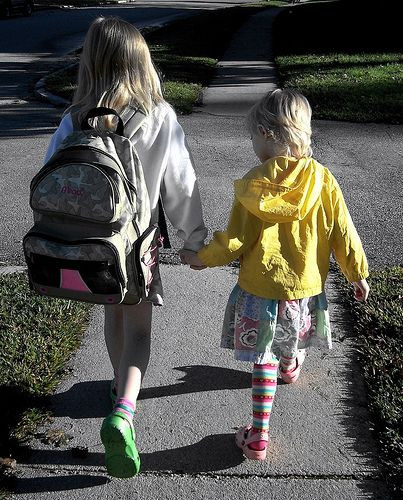Bulletproof School Supplies Gain Popularity In Hopes Of Protecting Against Shooters; Are They Making Children Safer?

In the wake of devastating school shootings like Virginia Tech, Sandy Hook, or even the most recent Atlanta shooting scare, concerns over school safety have led to the development of bullet-proof school accessories, including whiteboards and backpacks that serve the function of armor.
Though these inventions spring from good intentions and parents have been turning to them to estbalish some peace of mind when sending their kids off to school, whether or not these products are actually beneficial or efficient in the event of a crisis is another question.
Executive director of Safe Havens International, Michael Dorn, told NBC News that these items are "not practical from a cost-benefit standpoint,” after plenty of companies pitched invention ideas to his nonprofit, which assesses safety in various schools.
Steve Jurak of Mighty Mojo, a company that has come up with a bulletproof backpack insert called the LifePlate, told NBC News that with any uptick in violence in the media, their sales increase: "Whenever there is a blip, some random act of violence, we see a surge in sales." On its website, Mighty Mojo describes the backpack insert LifePlate as “15 times stronger than steel.”
Another company called Bullet Blocker developed a bulletproof backpack after Joe Curran, a father of two schoolchildren, wanted to find ways to increase safety for his kids. Other items on the market include $299 bulletproof whiteboards that are easily mobile and can be used as a shield of sorts if a shooter were to walk in on a classroom.
The University of Maryland Eastern Shore purchased about 200 of such whiteboards; the university spokesman Bill Robinson told NBC, "I heard a faculty member who had worked at Virginia Tech say yesterday that if investing $50,000 saves one life, it's worth it."
Not all agree with Robinson. The products are all part of a larger effort of schools attempting to beef up their security and safety systems in the hopes of preventing school shootings. But school and safety experts debate over what sort of measures to focus on – are these nifty "tools" like bulletproof backpacks and whiteboards really going to make a difference? Should schools be focusing on training programs like ALiCE (Alert, Lockdown, Inform, Counter, Evacuate) that teach kids to fight back? Some safety experts say schools should be improving their camera and surveillance systems, or perhaps focusing on the root of the issue by boosting mental health services for students.
Liz Halloran of NPR writes that “It's not just the conversation about guns and school safety that's changed since Adam Lanza gunned down 20 students…in December. It's also the plethora of products, including training programs…that are being marketed to school districts that are typically cash-strapped but desperate to prove they're doing something to provide better security.”
Ken Trump, a safety consultant, told NBC News that though these items may seem protective, they may not actually make much of a difference between life or death. "Schools have limited resources and they ought to use that money very wisely, put it into an additional school psychologist or a school police officer, train your staff and work with first responders,” he said. “The most valuable school security tools are invisible."
Published by Medicaldaily.com



























